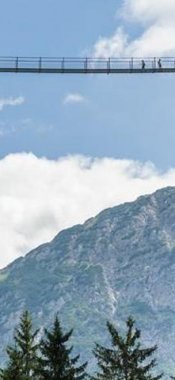Healing powers: Fieberbrunn takes its name from "Fieber" ("fever") and "Bründl" (a Tirolean diminutive form of the German word for "well") as a result of the healing powers attributed to the village's natural spring water.
Fieberbrunn derives its name from the words “Fieber” (fever) and “Bründl” (a Tirolean diminutive word for fountain), reflecting the village’s long history as a spa. It is said that in the 14th century Margarethe Maultasch, the princess of the province of Tirol, came to Fieberbrunn suffering from a serious bout of fever, drank from the Pramau source and quickly returned to health. What was good enough for Margarethe Maultasch in the 14th century was also good enough for her successor, Claudia von Medici, 300 years later – legend has it that she too made the journey to this corner of Tirol.
Surprisingly, this picturesque settlement in the Pillerseetal Valley has a long history of heavy industry dating way back before the Industrial Revolution. Iron ore of high quality was mined here in the 16th and 17th centuries, and Pillersee steel was in high demand internationally until the early 20th century.
In the second half of the 20th century things came full circle and the village once again became a centre of healing. In 1947 the pharmaceutical company Gebro was founded in Fieberbrunn. Today it distributes its products worldwide and employs almost 300 workers in its headquarters here in the heart of the Kitzbühel Alps.
Fieberbrunn derives its name from the words “Fieber” (fever) and “Bründl” (a Tirolean diminutive word for fountain),…























